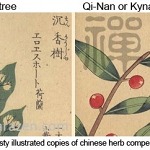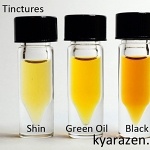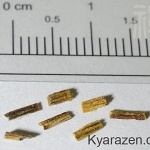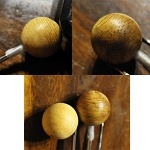Agarwood plantations are common all throughout South East asia today. Some plantations are beginning to reap the fruits of what they had planted a decade ago, and have pushed out a myriad of intriguing agarwood products such as agarwood leaf tea, agarwood cookies, agarwood flavoured instant noodles, wood chips, oils, soaps etc.
The strange thing about agarwood tea though, is that it is not something from too long ago, its fairly recent. The leaves of agarwood was not recorded in Chinese materia-medica to have any health benefits, and I’ve yet to come across it in ayurvedic medicine as well. Nevertheless there are people retailing these teas and drinking these teas with claims and advertisements on the health benefits. Whilst I’m unsure about this, I would be glad if anyone would be willing to share their experiences with these tea.
Being a lover of fragrant woods, amongst all the strange new products, I’m only interested in one thing, wood chips.
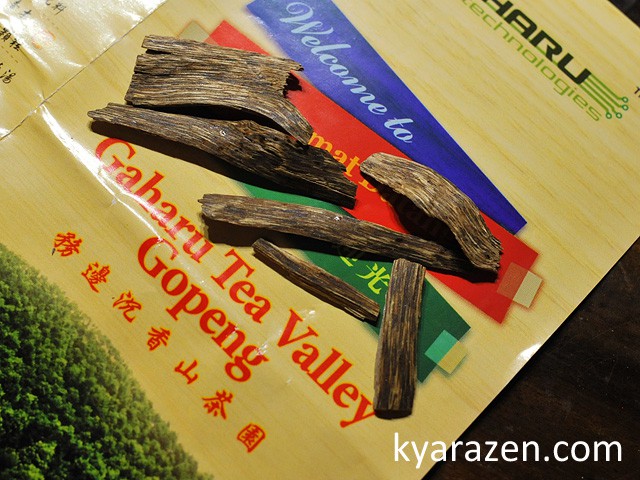
For the price of 25 ringgit (USD $8) you get to bring home 1 gram of their cultivated agarwood. Expensive! Whilst one face of the wood chip looks resinated…. when you flip it around…..
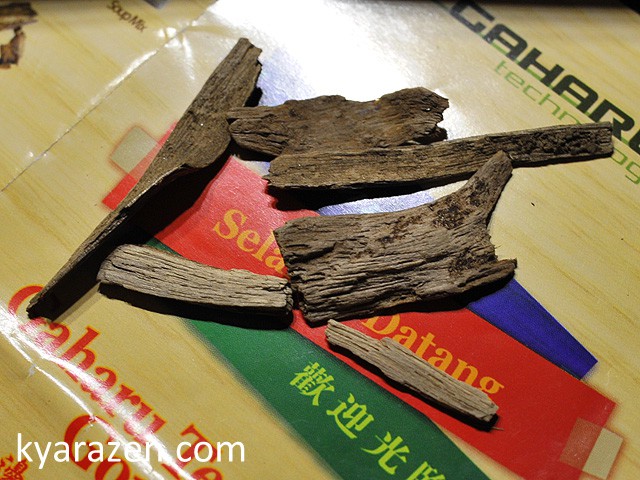
The resin seems to be just on one surface.
Without further ado, a small chip was put on the mon-koh test. Starting with a low temperature, the wood was really quiet, i could imagine it being gagged and tickled by the heat but no sound was heard….
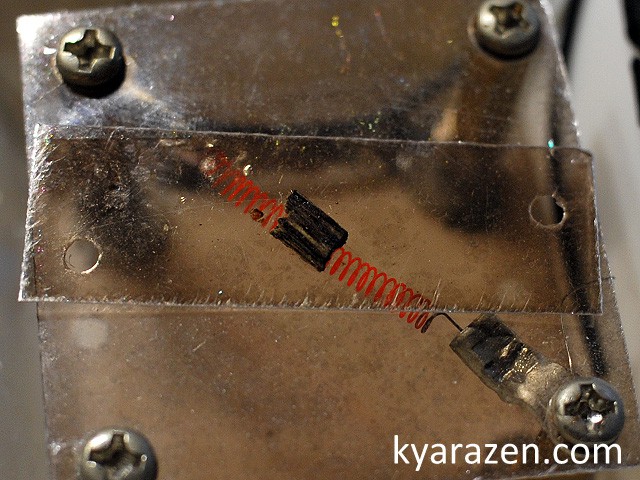
Disappointed, I revved up the heat a little more and got a little bit of life. The resination seems a little queer, the coloration was rather dark, but it was just so hard to get the scent properly released, it doesnt bubble much. The scent was thin, acrid, sourish, a little hint of metallic notes. I would say the wood is not for mon-koh.

And not withstanding, perhaps the wood could perform better when being burnt directly, so a chip was dropped onto a hot coal. The smoke was similarly acrid, but one could detect the “agarwoody” background now.
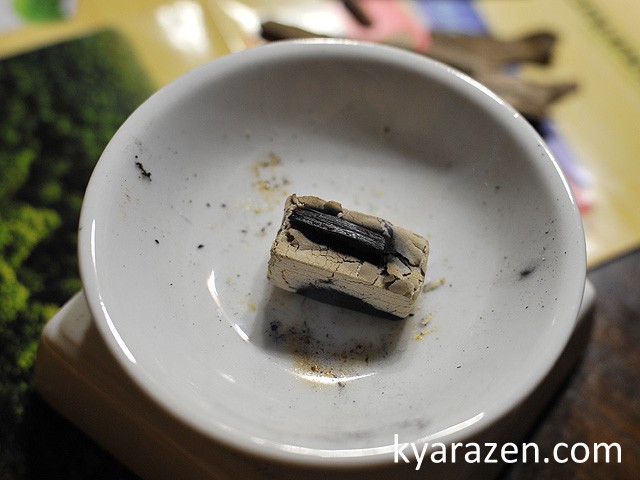
This plantation alone has about 200,000 trees in Perak, Malaysia. There are many more plantations around the country and in the region. I applaud their efforts in attempting to revive the species and developing a supposed sustainable way of agarwood production so that people can continue to enjoy.
However perhaps, they may wish to reconsider different ways of innoculation so that the wood can take on a better olfactory profile. Or maybe have a little more patience, because in reality, many decades is needed for proper agarwood formation, the age of the resin and resination process is important, than rushing to collect the thinly resinated wood in a matter of a few years.
I’ve not gotten the oil but one of my relatives bought a bottle, perhaps i’ll take a whiff when i get a chance, and say a few more words then.

